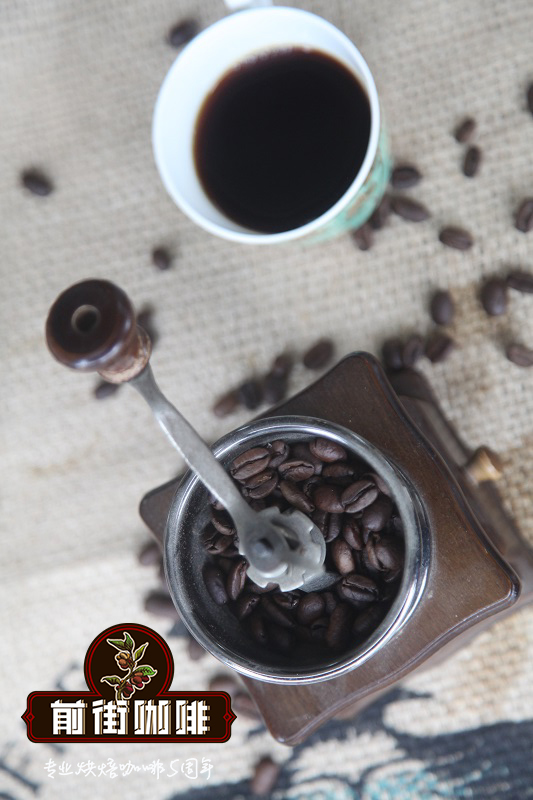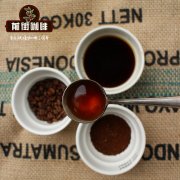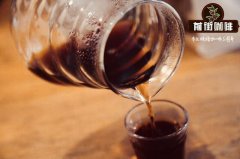What are the special characteristics of Indonesian coffee producing areas in Asian coffee producing countries?

Professional coffee knowledge exchange more coffee bean information please follow the coffee workshop (Wechat official account cafe_style)
Qianjie-A brief introduction of coffee producing areas in Indonesia, a coffee-producing country in Asia
Centered at the equator and in the tropics and subtropics between latitudes of about 25 degrees south and north, it is the most suitable area for growing coffee. However, good forests can not be cultivated anywhere in the region. The three major coffee growing areas in this section are: Asia-Pacific, Latin America and Africa. There are more than 60 coffee-producing countries, of which Central and South America account for about 60%, followed by Africa and Arabia for about 30%, and the remaining 10% are distributed in Asian countries and most islands. What these areas have in common is that the temperature and annual rainfall are about the same, and there is plenty of sunshine and fertile soil.
The islands where coffee is grown in Indonesia are: Sumatra of Sumatra, Sulawesi of Sulawesi, Java of Java, Sumbawa of Sumbawa, Flores of Flores and Papua of Papua Province. Among them, Sumatra is the main coffee growing place in Indonesia, and the most famous Mantenin coffee comes from here. Sumatra is divided into two producing areas: the first is Aceh in Aceh in North Sumatra and the second is Linton in Lake Dorba in the south-central part of the country. The most famous planting area in Aceh is the Gayo Mountains that surround Lake Tawa, and it is also the main producing area of Mantenin, which is 1100-1300 meters above sea level. Mantenin refers to Arabica coffee in northern Sumatra, which derives its name from the local Manning people.
Lindong is located in the southwest of the largest lake in Sumatra: Tobahu, which is an important source of boutique coffee in Indonesia. Java, the first island in Indonesia to grow coffee beans, was introduced by the Dutch East India Company in about the 16th century. Sulawesi Island is the producing area of another famous Indonesian coffee "Toraga", which is located in the southern mountains of the equatorial island of Sulawesi. The early Dutch colonization brought Arabica raw beans, which at that time became world-famous as Celebes Kalossi (Selbis-Carosi). Later, the Japanese entered Toraga to improve the local industry and quality of coffee, and made Tolaga famous in Asia.
Indonesia (Indonesia) famous representative coffee: Java (Java), Sumatra Manning (Sumatra Mandheling)
Indonesia produces coffee beans mainly in Java, Sumatra, Sulawesi and other three islands, all of which belong to volcanic topography. It is generally believed that Indonesian coffee beans have a strong aroma and low acidity, with a slight taste of traditional Chinese medicine and soil. Mandheling, produced in the mountains of Sumatra, is world-famous and rich in texture. Robusta beans from Java have a unique smell and are often used as a recipe for espresso because they are rich in oil. The coffee produced by Sulawesi is rated as having a special herbal flavor, deep and clean.
In particular, there is a special animal called civet in the Indonesian mountains because it makes Indonesia produce almost the most expensive coffee in the world-civet coffee. This kind of cat likes to eat coffee berries, and hard coffee beans end up being excreted because they can't digest. During the period of passing through the digestive tract, coffee beans are fermented to produce a unique and complex flavor, which makes many gluttons like this kind of coffee with special aroma. But because the output is very small, so the price is very high, in the hundreds of dollars per pound.
Knowledge expansion: in Indonesia, 90% of coffee belongs to Robusta, probably as a result of the devastating 19th-century coffee leaf rust. But in Toraja producing areas, 95% of coffee belongs to Arabica.
In short: Qianjie is a coffee research hall, happy to share the knowledge about coffee with you, we share unreservedly just to make more friends fall in love with coffee, and there will be three low-discount coffee activities every month. The reason is that Qianjie wants to make more friends drink the best coffee at the lowest price, which has been Qianjie's tenet for 6 years!
END
Important Notice :
前街咖啡 FrontStreet Coffee has moved to new addredd:
FrontStreet Coffee Address: 315,Donghua East Road,GuangZhou
Tel:020 38364473
- Prev

What are the producing areas of Coffee in Asia-- introduction to the conditions and characteristics of the three major producing areas of small-grain coffee in Yunnan
Professional coffee knowledge exchange more coffee bean information please follow the coffee workshop (Wechat official account cafe_style) Qianjie-Asian coffee producing area brief introduction to Yunnan coffee production area coffee originated in tropical Africa, Arabica coffee (Arabica) originated in Ethiopia and South Sudan, Robusta coffee (Robusta) is from West Africa, about 1000 years ago, Arabs
- Next

American Coffee producing area | introduction to the species and flavor characteristics of coffee beans in Colombia
Professional coffee knowledge exchange more coffee bean information please pay attention to the coffee workshop (Wechat official account cafe_style) front street-American coffee producing region of Colombia Coffee production area of the Americas refers to Central and South America, the area north of Mexico basically does not produce coffee beans. Coffee producing areas in the Americas are mainly distributed from the Tropic of Cancer to the equator, and in Central America.
Related
- Beginners will see the "Coffee pull flower" guide!
- What is the difference between ice blog purified milk and ordinary milk coffee?
- Why is the Philippines the largest producer of crops in Liberia?
- For coffee extraction, should the fine powder be retained?
- How does extracted espresso fill pressed powder? How much strength does it take to press the powder?
- How to make jasmine cold extract coffee? Is the jasmine + latte good?
- Will this little toy really make the coffee taste better? How does Lily Drip affect coffee extraction?
- Will the action of slapping the filter cup also affect coffee extraction?
- What's the difference between powder-to-water ratio and powder-to-liquid ratio?
- What is the Ethiopian local species? What does it have to do with Heirloom native species?

